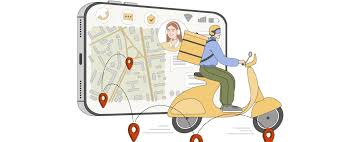In today’s fast-paced digital economy, convenience is king. And in 2025, the delivery app industry is thriving like never before. From groceries and food to medicine and last-mile logistics, on-demand delivery apps have become essential to how we live, shop, and work.
If you’re thinking about entering this dynamic market, now is the perfect time. This blog explores the top reasons why 2025 offers a unique opportunity to launch your delivery app—and how you can make the most of it.
Market Demand Has Reached New Heights
The global appetite for on-demand services is growing at a rapid pace. According to industry research:
- The global on-demand delivery market is expected to exceed $500 billion by 2026
- Food and grocery delivery is growing at a compound annual rate of 15–20%
- Over 65% of consumers prefer ordering through mobile delivery apps
Whether in metro cities or rural towns, people now rely heavily on delivery services for everyday needs. By launching your app in 2025, you tap into an ecosystem that’s already thriving and primed for innovation.
Technology Is More Accessible Than Ever
Gone are the days when building a mobile app meant massive investments. In 2025, emerging technologies and pre-built tools have made delivery app development faster, more affordable, and highly scalable.
With features like:
- Real-time GPS tracking
- Contactless payments
- Smart route optimization
- Seamless user interfaces
- Push notifications and loyalty features
You can create a world-class product without extensive technical infrastructure.
Artificial Intelligence Is Driving Smart Experiences
AI and automation are transforming the delivery industry in 2025. By incorporating AI-powered features into your app, you can enhance customer service, reduce operational costs, and improve delivery efficiency.
Innovations include:
- Predictive ordering based on behavior and trends
- Automated order assignment and driver tracking
- Chatbots for real-time customer support
- AI-driven inventory management and forecasting
These tools make your app more responsive, intelligent, and competitive.
Niche Delivery Services Are on the Rise
The success of delivery apps no longer rests on just food or grocery delivery. 2025 is seeing a sharp rise in niche categories, with consumers looking for specialized, hyperlocal experiences.
Emerging delivery niches include:
- Medicine and pharmacy delivery
- Eco-friendly grocery delivery
- Alcohol and regulated goods delivery
- Farm-fresh produce and organic products
- Pet care and vet supply delivery
By addressing a specific need, you can build a loyal user base and differentiate yourself from generalist platforms.
Small Businesses Are Looking for Digital Support
Local retailers, restaurants, pharmacies, and small service providers are increasingly seeking ways to reach customers digitally. Many lack their tech infrastructure and are willing to partner with third-party delivery apps.
By offering a delivery app solution, you position yourself as a valuable partner in their digital growth journey, helping businesses reach new customers while building a scalable user base for your app.
Monetization Options Are Flexible and Profitable
Delivery apps in 2025 aren’t just a convenience—they’re a strong revenue model. You can generate consistent income through various monetization strategies such as:
- Delivery and service charges
- Subscription models for users or merchants
- In-app advertising
- Surge pricing during peak hours
- Featured listings and premium services
With a growing user base and demand, you can diversify your revenue streams from day one.
Improved Security and Compliance Frameworks
With clearly defined digital payment regulations, GDPR-style data privacy standards, and robust cloud infrastructures, building a secure and compliant delivery app is easier in 2025 than ever before. This builds user trust and helps you avoid legal complications
Scalable Infrastructure Enables Fast Growth
Thanks to advancements in cloud services, APIs, and modular development frameworks, your app can launch small and scale fast. You can start in a single neighborhood and expand the city by city, all while maintaining smooth operations and performance.
